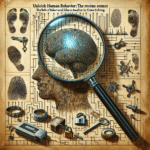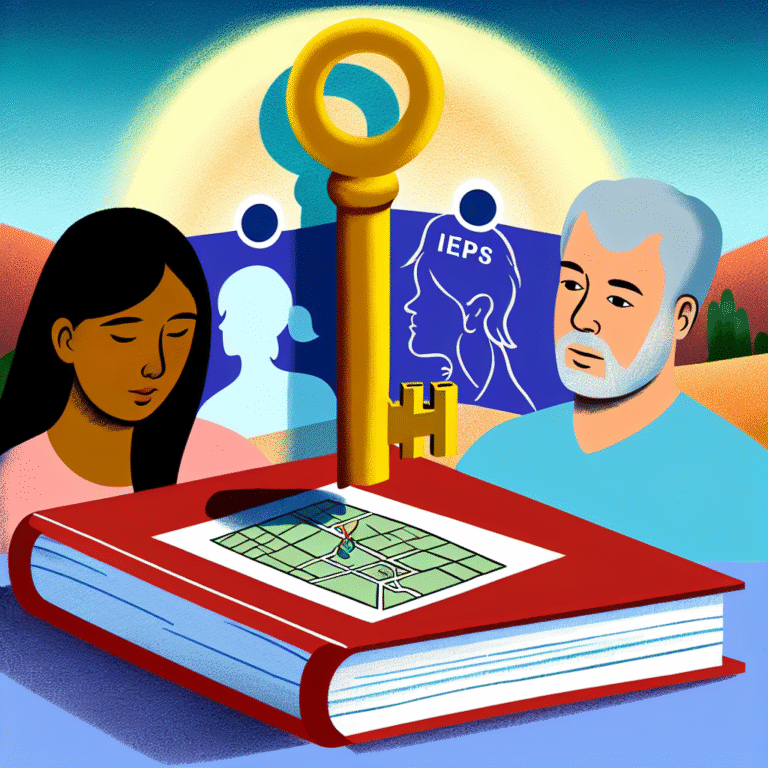In our increasingly interconnected world, the subtleties of location can reveal profound truths. Welcome to a realm where crime-solving meets cutting-edge geography. Behind the Map: Exploring the Techniques of Geographic Profiling is not just about laying down coordinates; it’s a journey into the heart of criminal psychology, geography, and investigative technique. As we navigate through this fascinating terrain, we’ll uncover how geographical insights can unlock mysteries and provide critical leads in dark cases that baffle authorities.
Introduction
Have you ever considered how where a crime occurs can reveal as much as who committed it? From solving mysteries in decades-old cases to preventing future crimes, the significance of location has become an indispensable tool for law enforcement. Behind the scenes, innovative techniques in geographic profiling are shaping investigations and redefining how we understand criminal behavior. This article will provide a comprehensive exploration of the methodologies behind geographic profiling, bolstered by real-world case studies that illustrate its application in modern investigations.
The Science of Spatial Analysis
What is Geographic Profiling?
At its core, geographic profiling is the application of geographical techniques to crime analysis, considering the spatial relationship between a crime scene and the offender’s likely base of operations. It uses criminological principles to create a psychological map that aids authorities in narrowing down suspects.
The Underlying Principles
The process employs various principles of spatial analysis, including central tendency, distance decay, and area of interest. The premise hinges on the notion that criminals are likely to commit offenses near their home or familiar areas, allowing investigators to focus their resources more effectively.
Table 1: Key Principles of Geographic Profiling
| Principle | Description |
|---|---|
| Central Tendency | Offenders usually reside near crime locations. |
| Distance Decay | The likelihood of an attack decreases with distance. |
| Area of Interest | Hotspots emerge in familiar areas. |
Techniques Utilized in Geographic Profiling
1. Criminal Geographic Targeting (CGT)
CGT employs algorithms to analyze populations and crime patterns. By combining various crime data points, it creates a "hot zone" where the offender is likely to be located. This system stands out for its efficiency and accuracy.
2. Least-Effort Principle
This theory posits that offenders will select targets that require the least effort when carrying out a crime. Understanding this behavior helps in predicting and analyzing future risks based on patterns of past crimes.
3. Geoprofiling Software
Recent advancements have led to sophisticated software tools capable of visualizing and analyzing crime data spatially. Tools like CrimeStat and ArcGIS allow officers to manipulate crime scene data and generate spatial hypotheses about offender location.
Real-World Applications: Case Studies in Geographic Profiling
Case Study 1: The Green River Killer
Gary Ridgway, infamously known as the Green River Killer, claimed the lives of numerous women in Washington State during the 1980s and 90s. The police faced immense challenges tracking him. However, through geographic profiling, authorities identified a pattern in the locations of the body dumps, pinpointing the areas he frequented and leading to eventual apprehension.
Analysis: This case illustrates how geographic profiling not only helped identify potential locations where the killer may have lived but also underscored the effectiveness of using cumulative data to narrow down suspects.
Case Study 2: The Unabomber
Ted Kaczynski, known as the Unabomber, used geographic profiling techniques to select his victims and target locations. Investigators utilized a geographic profiling methodology that incorporated distance decay principles, leading to a more precise understanding of his movements and enhancing the chances of capturing him before he could strike again.
Analysis: The sophistication of geographic profiling helped authorities develop a clearer picture of Kaczynski’s psychology and operational pattern, ultimately leading to his arrest in 1996.
The Importance of Data
Geo-Spatial Data Collection and Management
In today’s digital age, the collection of geo-spatial data is burgeoning. Through mobile devices and surveillance systems, more information is being gathered about crime scenes than ever before. This data can be analyzed using geographic profiling techniques to unveil patterns that were once hidden in plain sight.
Table 2: Examples of Geo-Spatial Data Sources
| Source | Purpose |
|---|---|
| Surveillance Cameras | Capturing real-time data of crime activity. |
| Social Media Check-ins | Spatial footprint of suspects’ movements. |
| Public Transportation Data | Identifying movement patterns of relevant individuals. |
Beyond Crime: The Expanding Applications of Geographic Profiling
While often seen through the lens of crime analysis, geographic profiling has far-reaching applications. Environmental agencies utilize similar techniques to track wildlife poachers, urban planners assess crime hotspots for city development, and even marketing strategies rely on geographical data to target consumer behavior more effectively.
Predictive Policing
The future of geographic profiling lies in predictive policing. With artificial intelligence and machine learning, it is now possible to forecast where crimes are likely to occur based on historical data and geographical tendencies. By understanding these principles, law enforcement agencies can preemptively allocate resources to high-risk areas, potentially reducing crime rates.
Conclusion
Behind the Map: Exploring the Techniques of Geographic Profiling not only highlights a sophisticated blend of geography, data analysis, and criminology, but it also unveils the importance of understanding human behavior in spatial contexts. The ability to decipher patterns and predict outcomes can bring us one step closer to solving the most perplexing cases.
In an era where technology continues to evolve, so too must our methods of investigation. Geographic profiling provides a critical advantage, often where traditional investigative methods falter. By embracing and understanding these techniques, we enhance our ability to serve justice and maintain safety in society.
FAQs
1. What is geographic profiling?
Geographic profiling is the application of spatial analysis techniques to crime investigation, used to identify likely offender locations based on crime scene data.
2. How does geographic profiling help solve crimes?
By analyzing crime patterns and the spatial relationship between locations, geographical profiling enables investigators to focus their efforts on specific areas where offenders are likely to reside or operate.
3. What technologies are used in geographic profiling?
Technologies such as geographical information systems (GIS), crime analysis software, and algorithms like CrimeStat are utilized for spatial analysis in geographic profiling.
4. Are there limitations to geographic profiling?
While powerful, geographic profiling relies on the accuracy and completeness of data. It can also be less effective in cases where offenders do not follow predictable patterns.
5. Can geographic profiling be applied outside of criminal investigations?
Yes, geographic profiling techniques are used in various fields, including urban planning, marketing analysis, and environmental management, demonstrating its versatility and relevance beyond law enforcement.
In summation, Behind the Map: Exploring the Techniques of Geographic Profiling reveals layers of insight about our environments and behaviors. Understanding the cutting-edge methodologies behind geographical profiling can unveil new solutions and prevent future criminal activities. It’s an essential tool that helps illuminate the unseen while ensuring that justice is served effectively and efficiently.















